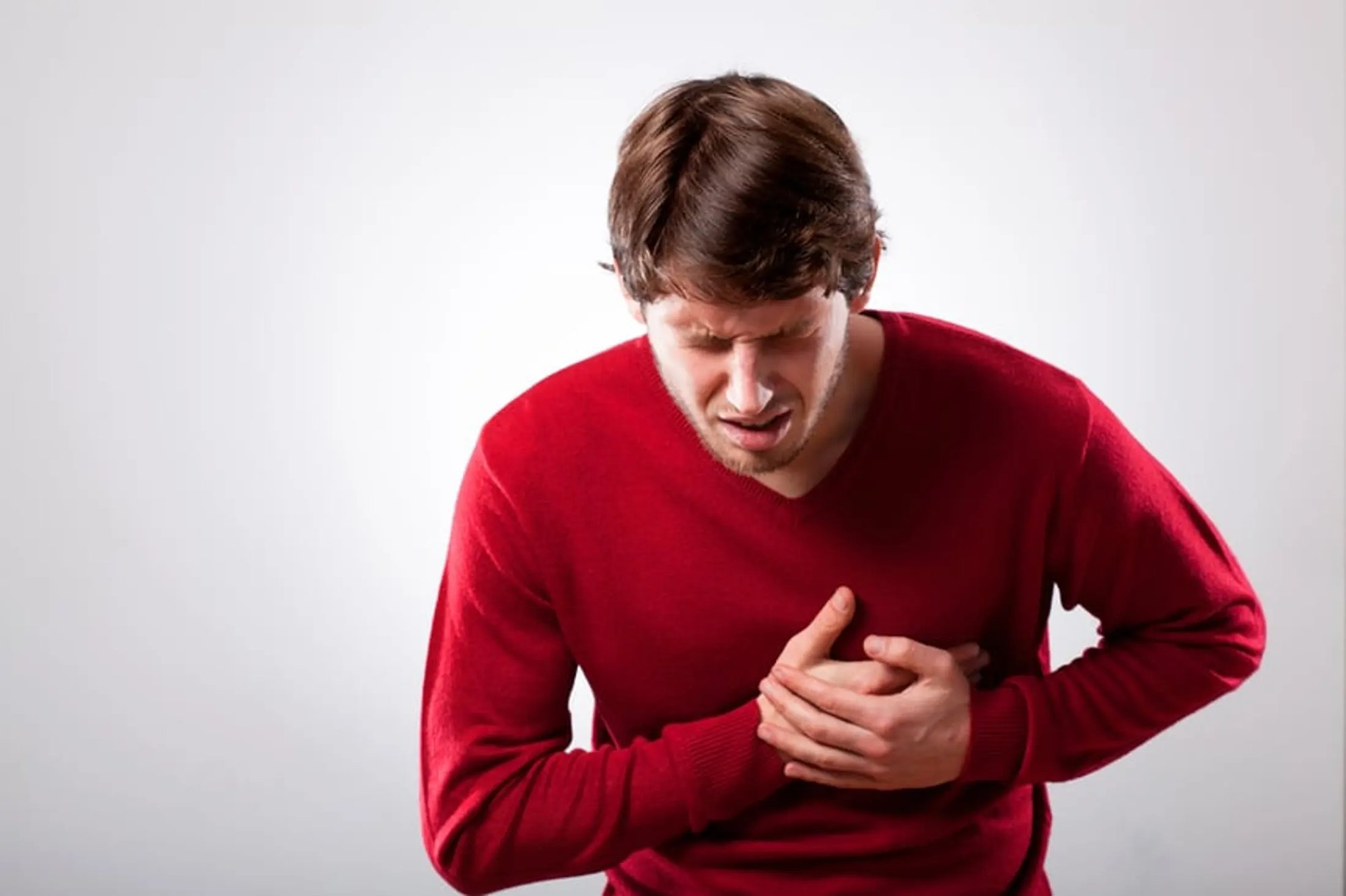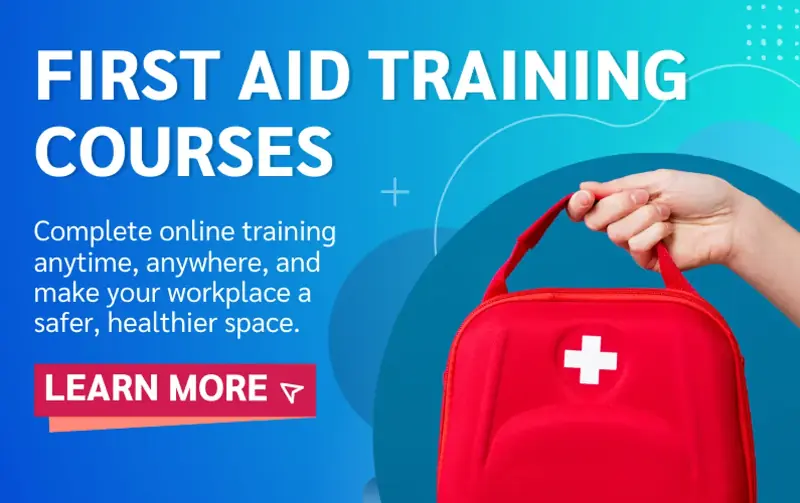Heart attacks are responsible for over 100,000 hospital admissions annually in the UK alone, an average of 1 heart attack every 5 minutes.
Whilst not always fatal, not treating a heart attack can have grave consequences. This article explains what a heart attack is, how to identify one and how to treat someone suffering from one.
What is a heart attack?
Also known as myocardial infarction or MI, a heart attack occurs when a blockage, such as a blood clot, causes a loss of blood flow to the heart. Without a sufficient supply of blood, the heart muscle can be seriously damaged and can even be fatal.
The main cause of a heart attack is coronary artery disease (CAD), where the artery is blocked. At its most extreme, this blockage causes cardiac arrest, which should be treated by following the Chain of Survival, which explains how to recognise cardiac arrest signs and how to perform CPR and defibrillation.
What do heart attacks feel like?
Heart attacks generally cause pain or discomfort in the chest. The signs and symptoms of a heart attack include:
- Sweating
- Shortness of breath
- Coughing or wheezing
- Nausea or vomiting
- Anxiety
- Chest pain (particularly tight or squeezing)
- Lightheadedness
- Pain in other parts of the body, specifically if the pain feels like it is travelling from the chest outwards around the body

Chest pain or discomfort is a symptom of a heart attack.
Unfortunately, in some cases, symptoms do not manifest with any increasing intensity. A heart attack can feel like indigestion and sometimes, although less frequent, the person might not even feel any pain at all.
Early warning signs of heart attack can even present themselves a month before, so it's important to take these signs are taken seriously and ensure medical attention is sought before the situation becomes more serious.
Treating a heart attack
If you think someone is having a heart attack, call 999 immediately. Even if you are uncertain, it's better to be cautious than risking a life-threatening situation. By taking immediate action, you can significantly improve someone’s chance of surviving a heart attack.
Give them an aspirin tablet to take, provided they aren’t allergic to aspirin, which will thin the blood and help restore blood supply to the heart.
Keeping the person at rest (sitting down) helps avoid unnecessary strain on the heart. Beyond this, sit tight and explain to the ambulance crew when they arrive what the individual was doing before the heart attack.
How long does a heart attack last?
The length of a heart attack depends on its severity. A mild heart attack may last a couple of minutes, however, if the artery is completely blocked, the heart attack can be over 20 minutes long.
Does a heart attack cause cardiac arrest?
In some instances, a heart attack can lead to cardiac arrest, causing the casualty to stop breathing. The Chain of Survival details the steps to take to respond to a cardiac arrest. This includes performing resuscitation with CPR and a defibrillator. Basic life support courses will teach you the correct procedure to follow (in several scenarios) when responding to an emergency.
| Basic Life Support Course Complete Basic Life Support training as part of the Emergency First Aid at Work course. You'll also be taught how to treat common workplace injuries and more. |
How should you treat cardiac arrest?
A cardiac arrest is brought when the heart stops pumping blood around the body, causing the casualty to stop breathing normally or at all, and collapse. If you find a casualty on the floor and you aren't aware of the cause, first perform a primary survey. This is covered in our article 'First Aider Essentials - Acronyms for first aid emergencies'.
Treatment for cardiac arrest consists of cardiopulmonary resuscitation (CPR) and, if necessary, defibrillation using an Automated External Defibrillator (AED).
CPR is carried out by performing two key actions: chest compressions and rescue breaths, in order to regain a regular heartbeat and help the casualty to begin breathing again. Whilst, an AED, a small, portable, electrical device, is used to provide electrical shocks to restore a normal heart rhythm.
To properly apply chest compressions to an adult, there are three steps:
- 1) Interlock your fingers and place the heel of your hand on the centre of the casualty’s chest, and place the other hand on top.
- 2) Using your body weight, press straight down on the chest to a depth of around 5-6 cm. One of the most common mistakes is only using the arms to apply the weight, which doesn’t put the proper amount of pressure on the heart. You should be aiming to do this at a rate of 100-120 compressions a minute, so ideally twice a second. While you want to be careful that you don’t injure the person during compressions, you don’t want to risk applying too little pressure. Although you probably won’t do serious internal damage by being a little too forceful with compressions, it is better to risk cracking a rib than to let them die of a heart attack.
- 3) Continue doing this until the ambulance arrives and a paramedic tells you to stop.
Unfortunately, it's not just adults that suffer from heart attacks. Children can have heart attacks, and go into cardiac arrest too.
The main difference between cardiac arrest treatment for a child and an adult is that chest compressions and rescue breaths differ, due to the size difference between a child and an adult.
Find the breastbone, which will be one finger’s width above the joining of the bottom two ribs. From there, you will push down by 4cm if they are an infant, or 5 cm if they are a child.
If they are less than a year old, then apply the compressions with two fingertips. You can use the heel of ONE hand if you can’t get the proper depth on compressions. If the child is one year old or over, you should also apply compressions using only the heel of one hand. Make sure to lift your fingers so that you don’t apply pressure over the ribs.
For every 30 compressions, you should give two rescue breaths by tilting the head back and lifting the chin. Prior to providing any medical help, you should call attempt to call 999.
First Aid training is recommended for staff in all industries, especially those working in places where the likelihood of injury or other incidences are higher, such as in construction or in care homes.

-1.webp?width=243&height=74&name=Logo%20R%20Homepage%20White%20Final%20Horizontal%20Large%20NEW%20small%20(2)-1.webp)



-1.webp?width=50&height=59&name=Cyber%20Essentials%20Badge%20Large%20NEW%20(72dpi)-1.webp)
COMMENTS